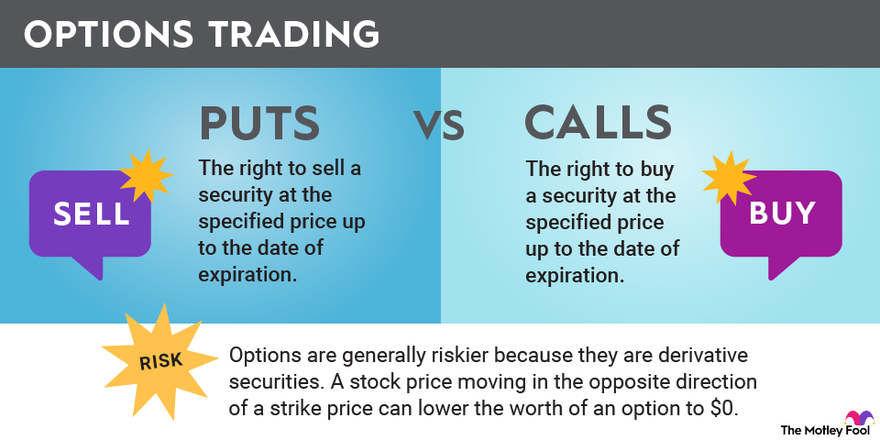Options trading, a dynamic financial strategy, offers traders a versatile tool to navigate market fluctuations. Understanding the fundamentals is crucial, and one of the most basic concepts is the “call” option. But why is it named “call”? Let’s delve into the etymology and relevance of this designation.

Image: www.fool.com
A Call to Action: Understanding Options Trading
An option contract grants the buyer the right (but not the obligation) to buy (or sell) an underlying asset at a predetermined price (strike price) on or before a specific date (expiration date). The call option specifically grants the buyer the right to buy the underlying asset. The term “call” stems from its inherent nature: it gives the buyer the power to “call for” the purchase of the asset if they deem it advantageous.
Essential Elements of a Call Option
Every call option is characterized by four essential components:
-
The Underlying Asset: It can be stocks, bonds, commodities, indices, or other financial instruments.
-
The Strike Price: This is the price at which the buyer has the right to buy the underlying asset.
-
The Expiration Date: It indicates the last date on which the buyer can exercise their right to buy the asset.
-
The Premium: When buying a call option, the buyer pays a premium to the seller, representing the cost of acquiring this right.
Exercising a Call Option: Profiting from Upside
There are two main approaches to utilizing a call option. Firstly, the buyer can choose to exercise their right to buy the underlying asset if it rises in value. For instance, imagine a call option on Apple stock with a strike price of $150 expiring in two months. If Apple stock rises to $170 before expiration, the buyer can exercise the option and buy the stock at $150, resulting in a potential profit.

Image: www.xtremetrading.net
Closing the Call Option: An Alternative Exit Strategy
Alternatively, buyers may sell their call option to close out the contract before expiration. As with any financial instrument, call options are traded on an exchange, and their value fluctuates based on supply and demand. By selling the option before expiry, the buyer can potentially recoup some of the premium paid, depending on the current market conditions.
Call Options in Practice: Managing Risk and Opportunity
Call options serve multiple purposes, but primarily they offer investors several advantages:
-
Profiting from Asset Appreciation: As mentioned, they provide the right to buy an underlying asset at a predetermined price, allowing traders to benefit from rising asset value.
-
Limited Risk: Unlike buying the underlying asset directly, the premium paid for a call option represents the maximum potential loss.
-
Leverage Effects: Call options, due to their use of leverage, can magnify potential profits. However, it should be noted that losses can also be amplified.
Options Trading Why Is A Call Called A Call

Image: crypto.com
Conclusion
Understanding the concept of a call option is pivotal in the intricate realm of options trading. By providing the buyer with the right to “call for” the purchase of an underlying asset, call options offer investors a versatile tool for navigating market dynamics. Whether exercising the option or closing it before expiration, call options empower traders to manage risk, speculate on asset appreciation, and explore various trading strategies. By embracing these insights, investors can harness the full potential of call options and make informed decisions in the financial markets.






